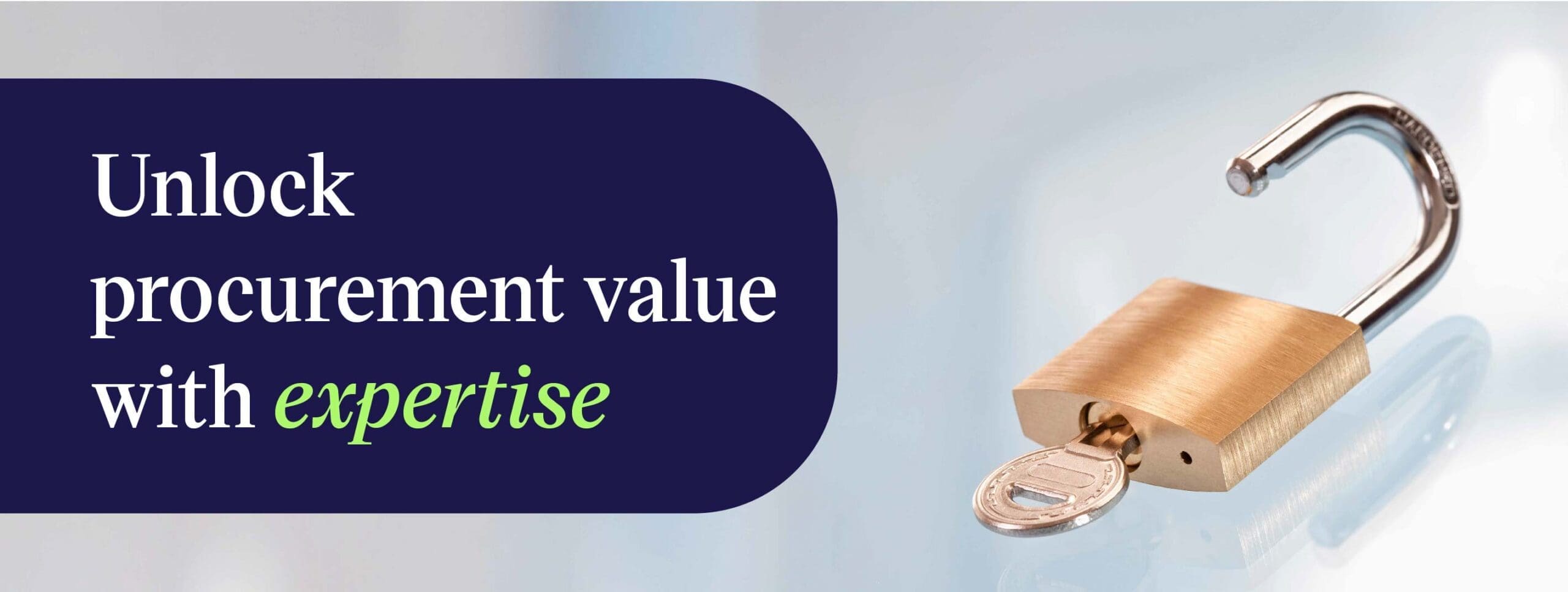Replace the procurement generalist approach with category expertise
- Home
- Replace the procurement generalist approach with category expertise
Home - Replace the procurement generalist approach with category expertise
Brett Romanelli

Why are so many Procurement leaders rushing to sacrifice subject matter expertise (and the stronger supplier relationships and cost savings opportunities it offers) for the sake of building a team of mediocre generalists?
This question may sound stupidly backwards, but trends over the last few years show it’s happening more than CPOs may realize.
There is a certain appeal to molding generalists: their bland, clay bodies can squish to fit anywhere in the organization, giving Procurement the appearance of supporting the organization from corner to corner. Your boss’s boss can see your finger always on the pulse.
But the generalist mindset is a one-size-fits all mindset. It approaches market events and supplier communications with a strategically valueless paint by numbers approach – where every color we’re painting with is beige. Would you go to a bakery and ask them to cater a barbecue? No.
Allocating Procurement resources to be experts in specific categories rather than generalists is a step in the right direction towards achieving value-adding outcomes. Let’s explore a high-level roadmap of why you should shift your approach and how to do it effectively.
Why spend the time and resources to be a specialist?
Procurement has blessedly straight-forward KPIs that provide a litmus test: if you aren’t cutting costs or reducing expenses, you’re doing something wrong as a team and should seriously consider shifting your approach. Generalist approaches lack the detail and strategy in key fundamentals, which limits cost-savings potential for a few important reasons:
- Generalists lack in-depth expertise and experience of markets and categories. Generalists don’t have a good understanding of the players (suppliers), market prices, and the trends. This can lead to overpaying and being prey to the supplier who can easily manipulate and come out as a lopsided winner.
- Generalists typically build weak supplier relationships. Generalists speak to each supplier the same across all industries. As an example, a generalist will talk to a supplier in construction and then talk to a supplier in marketing the exact same way. The supplier is easily able to see through the lack of subject matter expertise and will not value this relationship as suppliers value relationships when procurement understands their business and industry.
- Generalists struggle to negotiate due to the lack of a tailored negotiation strategy. Good negotiation strategy relies on category expertise, market benchmarks, and understanding leverage. Generalists don’t have the in-depth understanding of specific categories to know how much leverage they hold, and the result is unfavorable outcomes in negotiations.
- Generalists lack proper risk mitigation strategies. Generalists don’t monitor trends, understand the potential disruptors, and the potential for volatility. Generalists tend to have a reactive approach, rather than proactive when it comes to dealing with disruptions. Being reactive could lead to expensive purchases, late deliveries, or stockouts.
A specialist with deep category expertise will understand these fundamentals and know how to manage these situations to achieve favorable outcomes.
How to transition to a specialized approach
Shifting to a specialized procurement approach takes time, evaluation, training, and restructuring. It’s not an overnight fix, and involves: .
- Assessment of people and practices: People must be evaluated to understand their expertise and experience, and allocated so they can focus on the categories in which they are strongest. If people have only been generalists, proper training and learning will be needed in their assigned category.
- Defining and focusing on categories: We need to add structure and clearly define the areas of spend before we can know where SMEs should be developed. Once the categories are organized and established, they can be prioritized based on their amount of spend, complexity, market volatility, and overall importance to organizational success. Only after categories are fully defined and tiered based upon importance can resources be allocated based upon expertise.
- Limiting scope: The above spend categorization will likely yield quite a few areas of potential for where to allocate specialists. However, not every opportunity is created equal – we must limit our scope to ensure resources are allocated appropriately. Many Procurement leaders have become used to spreading generalist resources far and wide, which will cause our more targeted approach to fail. Take a Pareto-shaped chainsaw to your spend cube (scalpels come later) and cut out any categories that don’t make up the top 80% of your spend. Do the same again for each remaining category’s subcategories. Tail spend management is important, but a subject for another time.
- Restructuring roles and responsibilities: This is where the restructuring of the Procurement team occurs. Roles must be realigned based upon the defined categories, assigning resources to the categories they are strongest in and identifying where there are gaps. Define levels of authority, accountability, and responsibility for each role on the Procurement team. Codify these decisions in governing policies and SOPs to ensure the entire organization is on the same page about Procurement’s contributions.
- Training and development: General Procurement training still has a place, but specialized, category-specific training is essential. Third-party training programs may be valuable, but look first to internal category leaders to help develop these programs – not only will they end up better targeted to an organization’s needs, but this will also help foster stronger relationships between Procurement and internal customers.
- Developing strong supplier relationships: Once resources are assigned to the categories of their expertise, they should focus on establishing a long-term vision and building partnerships with the players in the category. To do this, each category expert needs to know the players in the industry, their background information, and what their goals are. Next, the category expert should craft a communication style that appeals to the personality of the industry and supplier. After homing in on the communication style, the category expert must take charge and consistently communicate with the supplier (calls or emails). When communicating with the suppliers, the category expert should foster a collaborative environment where both parties align on shared objectives. It is critical that the category expert treats each supplier as an important strategic partner and recognizes and rewards suppliers when they perform well.
- Reinforcing the vision: As with any change, there are potential bumps and hurdles to overcome. It is necessary to consistently reinforce the vision for the Procurement team to ensure and maintain alignment and commitment. To start, the organization must assign a Change Leader. The Change Leader should conduct training sessions, gather feedback, and consistently communicate with the individuals affected by the change. The Change Leader must also be able to identify when the team is veering off path. Some general indicators include:
- Complaints and objections (resistance to change)
- Minimal participation and engagement in training sessions and meetings
- Visible frustration, nerves, and stress
It’s important that the Change Leader closely monitors how the impacted individuals are adapting to the change, and has a proactive approach to engaging with the individuals early.
Upshot: Why procurement teams should replace the generalist mindset with category expertise
By moving away from a one-size-fits-all generalist mindset toward deep category expertise, procurement teams position themselves for long-term strategic value. This shift empowers better supplier relationships, stronger cost controls, and smarter risk management — benefits that generalist models simply can’t deliver at scale. It’s not just a tactical adjustment; it’s a competitive advantage.
Ready to move your procurement team from generalists to true category experts?
Corcentric helps organizations realign procurement with purpose, building category depth, supplier trust, and measurable ROI. Let’s start by identifying where category expertise can create the biggest impact, then, whether you need a playbook, a partner, or a push in the right direction, we have the tools and expertise to get you there. Let’s talk about where you are and where you want to be.


